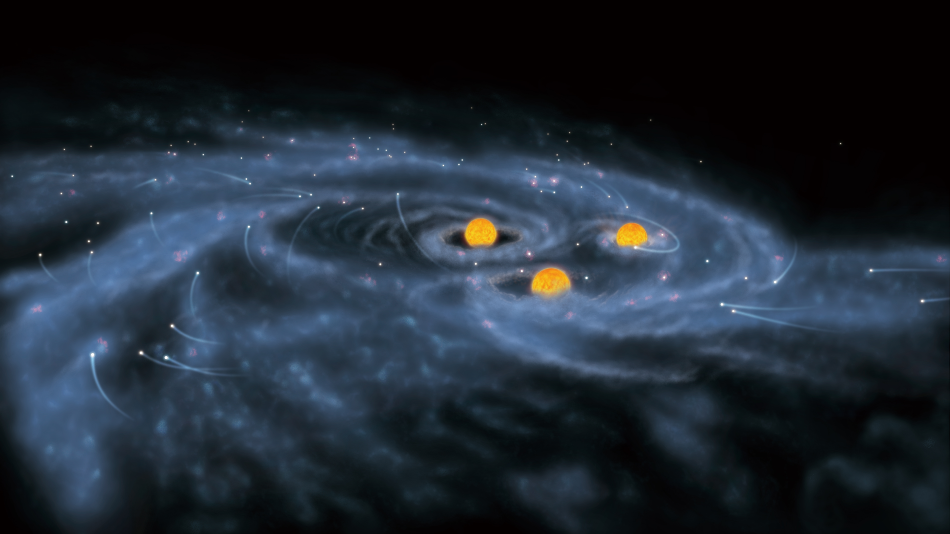Jun 3 2020
At Tohoku University in Japan, astrophysicists have performed computer simulations revealing a new theory for the origin of supermassive black holes.
 Artist’s impression of the formation of supermassive stars which evolve into a supermassive black hole. Image Credit: NAOJ.
Artist’s impression of the formation of supermassive stars which evolve into a supermassive black hole. Image Credit: NAOJ.
According to the new theory, the precursors of supermassive black holes develop by devouring not just interstellar gas but smaller stars as well. This offers an explanation for the huge number of supermassive black holes spotted at present.
In the modern universe, a supermassive black hole exists at the center of virtually every galaxy. At times, their masses can reach nearly 10 billion times that of the Sun. But their origin is still one of the great enigmas in the field of astronomy.
A well-known theory is the direct collapse model, according to which primordial interstellar gas clouds collapse under the influence of self-gravity to form supermassive stars, which subsequently evolve into supermassive black holes. However, earlier studies have demonstrated that direct collapse holds good only in the case of pristine gas comprising just hydrogen and helium.
Heavier elements like oxygen and carbon tender to modify the gas dynamics, making the collapsing gas to disintegrate into several smaller clouds that form small stars of their own, instead of a few supermassive stars. Direct collapse from pristine gas alone cannot account for the huge number of supermassive black holes observed at present.
Sunmyon Chon, a postdoctoral fellow at the Japan Society for the Promotion of Science and Tohoku University, and his colleagues employed the National Astronomical Observatory of Japan’s supercomputer “ATERUI II” to conduct long-term 3D high-resolution simulations to investigate the possibility of formation of supermassive stars even in heavy-element-rich gas.
It has been challenging to simulate star formation in gas clouds with heavy elements due to the computational cost for the simulation of the violent splitting of the gas. However, latest developments in computing power, particularly the high calculation speed of “ATERUI II” commissioned in 2018, enabled the researchers to resolve this issue. The new simulations enable an in-depth investigation of star formation from gas clouds.
In contrast to earlier predictions, the researchers discovered that there is a possibility for supermassive stars to form from heavy-element-rich gas clouds. As predicted, the gas cloud fragments violently and several smaller stars are formed. But there tends to be a strong gas flow toward the center of the cloud; This flow drags the smaller stars, which are gobbled by the massive stars at the center.
The simulations led to the formation of a star that was 10,000 times more massive compared to the Sun.
This is the first time that we have shown the formation of such a large black hole precursor in clouds enriched in heavy-elements. We believe that the giant star thus formed will continue to grow and evolve into a giant black hole.
Sunmyon Chon, Postdoctoral Fellow, Japan Society for the Promotion of Science and Tohoku University
This new model demonstrates that not just primordial gas but even gas consisting of heavy elements can form giant stars, which act as the seeds of black holes.
Our new model is able to explain the origin of more black holes than the previous studies, and this result leads to a unified understanding of the origin of supermassive black holes.
Kazuyuki Omukai, Professor, Tohoku University
Journal Reference:
Chon, S & Omukai, K (2020) Supermassive star formation via super competitive accretion in slightly metal-enriched clouds. Monthly Notices of the Royal Astronomical Society. doi.org/10.1093/mnras/staa863.